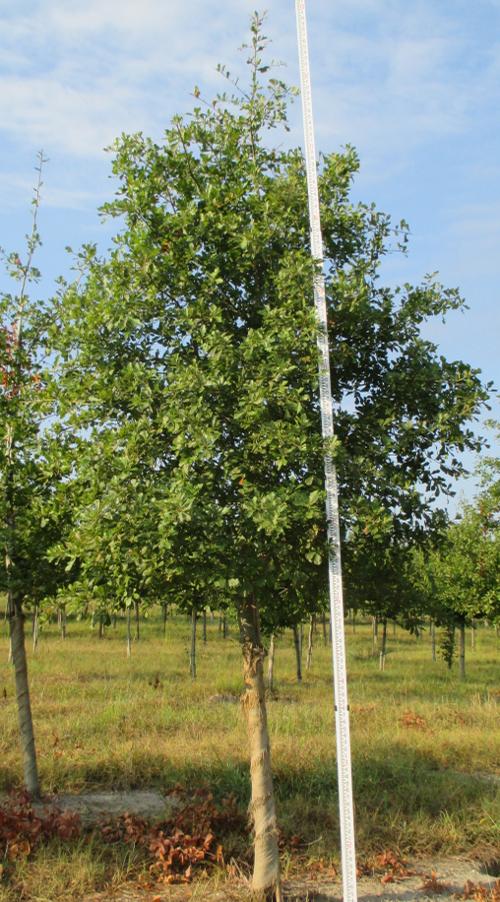

Quercus nigra
Water Oak
Water oak is native, fast-growing deciduous tree; however, sometimes it is considered an evergreen in the deep south because it can retain leaves into December and beyond. Leaves are bluish-green on the surface, paler beneath, spatulate, lanceolate, or variable in shape, and may have 0 to 5 lobes. A member of the red oak group, it has a conical to broad, rounded habit with a trunk diameter of 3.5 feet. Water Oak is regarded as weaker wooded in comparison to most oaks, and it also has a shorter life span.
Acorns are eaten by woodpeckers, wild turkey, other birds, and small and large mammals. Male catkins produce pollen. The trees provide nest sites for birds and pollen for pollinators.
The water oak is a great tree for naturalized areas, street tree, or shade tree in large areas. It is particularly useful for low spots or moist areas in the landscape
- Common native tree
- Conical to rounded habit
- Adapts well to wet sites
Landscape Characteristics
| • | Foliage Color |
Critter Resistance
| • | Deer Resistant |
Habit
| • | Upright |
Light Requirement
| • | Sun |
Foliage
| • | Deciduous |
Foliage Color
| • | Green |
Growing & Maintenance Tips for Quercus nigra
Transplants easily and grows well in moist to wet sites. It grows naturally along stream banks. Water Oak has weaker limbs than most oaks. Limbs can break in high winds so be cautious planting near structures.
